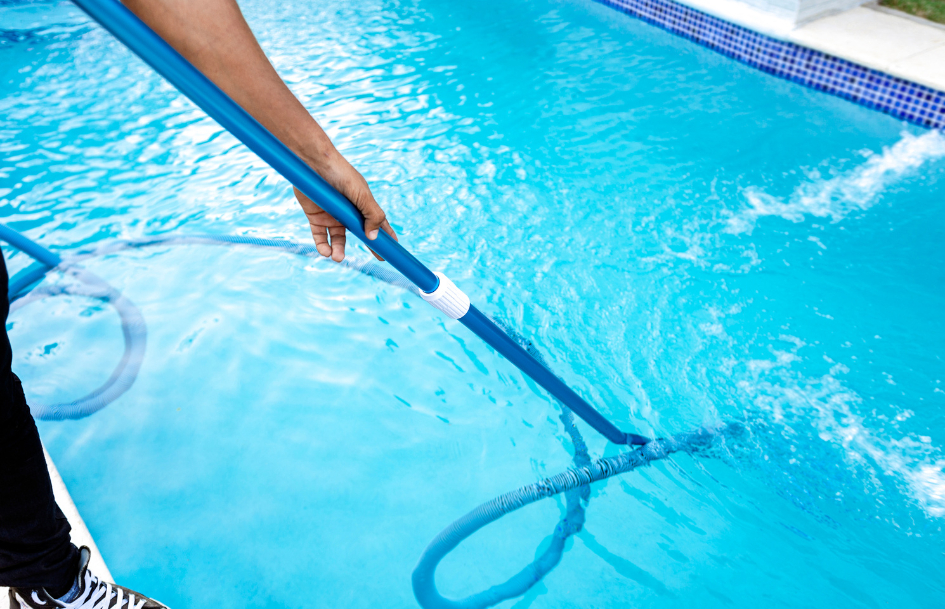Keeping a fibreglass pool algae-free
Keeping a pool algae free will require regular maintenance and proper care. Fibreglass pools are known for being durable, low-maintenance, and resistant to algae growth. They are still susceptible to algae infestation if not correctly maintained. In this guide, we will explore different types of algae, common algae related questions, and effective ways to prevent and treat algae growth in your pool.
Different types of algae:
- Green Algae: This is the most common type of algae found in pools. It usually appears as green, slimy patches on the pool walls and floor or in suspension in the water. Green algae thrives in the presence of sunlight and can be easily spread if not treated promptly.
- Mustard/Yellow Algae & Pink Algae: Appears as a fine layer or particles on the pool surfaces. It is more difficult to eliminate compared to green algae, as it can develop a protective layer that makes it resistant to chlorine treatment.
Common Questions about Algae in Fibreglass Pools
How does algae grow in a fibreglass pool and is it normal?
Algae requires several factors to grow, including sunlight, nutrients, warm water, severe weather conditions, insufficient sanitation, and an imbalanced pH level. It is possible for algae to occasionally appear especially if any of these conditions are present, algae can develop and multiply quickly. Additionally, poor circulation, inadequate filtration, and lack of proper maintenance can contribute to algae growth. It is important to address any sign of algae growth promptly to prevent it from spreading and becoming a larger problem.
How often should I clean my fibreglass pool to prevent algae growth?
Regular cleaning and maintenance are essential for preventing algae growth. Skimming the pool, vacuuming, brushing the walls, and maintaining proper water chemistry should be done on a weekly basis. Pay attention to areas with low circulation such as steps or ledges or where debris tends to accumulate, as these areas are more prone to algae issues.
Can algae growth damage my fibreglass pool?
While algae growth itself does not typically cause damage to the fibreglass pool shell, neglecting to address and treat algae growth can lead to more severe issues. For instance, damage to your filter and staining to the pool surfaces.
Preventing and Treating Algae Growth in Fibreglass Pools
Maintain proper water chemistry
Regularly test and balance the pH, chlorine level, calcium, phosphates, and alkalinity of the pool water. This helps create an environment that is less conducive for algae growth.
Regularly clean and vacuum the pool
Skim the pool’s surface to remove floating debris, brush the walls and floor, and vacuum regularly to eliminate any organic matter that could fuel algae growth. Use your pool cleaner regularly – preferably a robotic type.
Ensure proper circulation and filtration
Your pool’s circulation and filtration system should be functioning at optimal levels. Check and clean your pool filter regularly to prevent clogging and maintain sufficient water circulation.
Use algaecides as a preventive measure
Algaecides help inhibit and prevent algae growth. Choose an algaecide suitable for the algae type in your pool and follow the manufacturer’s instructions for proper usage. Always seek professional advice when treating algae and obtain a pool test from your pool shop.
Shock the pool when necessary
If you notice signs of algae growth or your regular maintenance routine is not keeping algae at bay, shock treatment may be necessary. This involves adding a high dose of chlorine or a non-chlorine shock product to the pool water to kill and remove existing algae. Ensure you follow the product procedure when applying.
Maintain appropriate water balance
Test and adjust the water chemistry regularly to keep the pH, chlorine, calcium, alkalinity, and where necessary stabiliser levels within the recommended range. This creates an environment that is unfriendly to algae growth.
Consider using a pool cover
Using a pool cover when the pool is not in use can help reduce the amount of debris, sunlight exposure, and nutrient buildup, which in turn will make algae growth less likely.
Regularly inspect and repair any damage
Inspect your fibreglass pool regularly for cracks, chips, or any damage that may provide a breeding ground for algae. Repair any issues promptly to maintain a healthy and algae-free pool environment.
For the best result
It would be highly recommended that you take your pool sample to your local professional like Poolwerx to perform a test on site visit. Alternatively, engage in a regular maintenance program personally customised to your needs.
By following these measures and adhering to a regular pool maintenance routine, you can effectively prevent and treat algae growth in your fibreglass pool. Keeping the pool clean, balanced, and well-circulated will greatly minimise the risk of algae infestation, ensuring a clean and enjoyable swimming experience for all.
